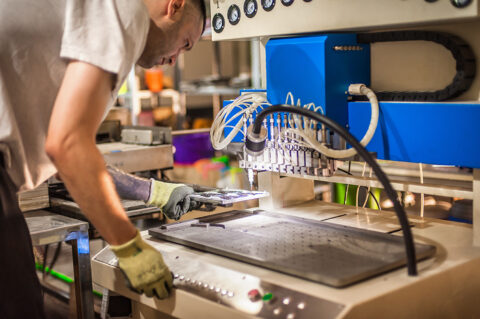If you’re trying to understand where American manufacturing stands right now, the past week offered a revealing snapshot. The data signals some immediate turbulence—manufacturing output is still shrinking, job numbers are down, and supplier sentiment remains cautious. Yet beneath the surface, there’s evidence of a deeper strategic realignment taking shape across trade, industrial policy, energy, and national security.
The headlines tell a story of tension between short-term strain and long-term opportunity. The PMI held below 50 for a fourth straight month, and factory job losses continued into June. But instead of retreat, the federal government is leaning in. New pharmaceutical tariffs, steel sourcing rules, and semiconductor deals with Japan all reflect an unmistakable direction: policy is being used aggressively to bring production back home, diversify sourcing, and rebuild the industrial base.
At the same time, the sector is being shaped by powerful macro forces. AI infrastructure investments are pulling nuclear energy development into the manufacturing conversation. Workforce shortages remain a persistent challenge, with millions of skilled roles projected to go unfilled without serious adaptation. Meanwhile, defense analysts are ringing alarm bells about the fragility of U.S. semiconductor manufacturing—especially in a geopolitical context where supply chains are now strategic assets, not just cost centers.
Taken together, these developments highlight a foundational truth: American manufacturing isn’t just about quarterly numbers. It’s about optionality in a dangerous world. It’s about having the domestic capacity to build what we need when it counts. And it’s about reimagining how 250,000 small manufacturers—98% with fewer than 500 employees—can work together more effectively through better tools, smarter policy, and renewed national focus.
This is not the end of an era—it’s still early innings in a generational shift. The question isn’t whether change is happening. It’s whether we’re moving fast enough to meet the moment.
Main Stories
Tariffs Get Tactical: Pharma, Steel, and Aluminum Face Sharp Moves
The Story: The Trump administration is imposing new tariffs on pharmaceuticals beginning August 1 and has already doubled steel and aluminum tariffs to 50%, adding strict “melted and poured” domestic sourcing rules.
Why It Matters: These policy moves aim to drive domestic production in critical sectors, correcting years of offshoring by making it economically and strategically advantageous to produce essential goods at home.
The Bigger Picture: This marks a pivot from broad trade battles to targeted tools designed to secure U.S. manufacturing capacity where it matters most—healthcare, defense, and infrastructure.
Energy Surge: Nuclear Buildout Powers New Industrial Momentum
The Story: Westinghouse announced it will build 10 new AP1000 nuclear reactors across the U.S., part of a broader $90 billion infrastructure wave tied to AI data center growth and grid modernization.
Why It Matters: These projects directly support advanced manufacturing by providing stable, domestic energy needed for precision processes, heavy industry, and high-volume computing.
The Bigger Picture: Manufacturing’s resurgence will depend not just on tariffs and trade deals, but also on whether energy and digital infrastructure can keep pace with industrial ambitions.
Semiconductor Defense Alert: The Supply Chain We Can’t Afford to Lose
The Story: Defense think tanks and industry experts are calling for urgent changes in semiconductor strategy, citing national security risks and backing efforts to bring Taiwan-based fabs stateside with Japanese funding.
Why It Matters: Chips aren’t just for consumer goods—they’re central to defense systems, communications, and critical infrastructure, and dependency on Asia poses serious vulnerabilities.
The Bigger Picture: This is about more than economic policy; it’s about maintaining control over the technological foundation of future defense and industrial systems.
Quick Hits
- PMI still under 50 (49.0 in June, 49.5 in July) — Signaling continued contraction in U.S. manufacturing output.
- 7,000 factory jobs lost in June — Second straight month of employment decline in the sector.
- $550B Japan-U.S. semiconductor investment deal in play — Could anchor advanced chip production in American facilities.
- Indonesia trade agreement finalized — Opens critical nickel and medical device access for U.S. manufacturers.
- 3.8M projected manufacturing job gap by 2033 — Workforce shortages remain the biggest threat to long-term capacity.
Closing Thoughts
Policy, energy, and defense are beginning to align in ways that could fundamentally reshape the U.S. industrial landscape. But building capacity without people is a losing strategy. As we press forward with reshoring efforts and high-profile investments, it’s time to make workforce development and supplier network enablement as strategic as tariffs and trade.
We’ll be watching closely next week for tariff implementation updates, pharma reshoring announcements, and possible movement on semiconductor funding.




